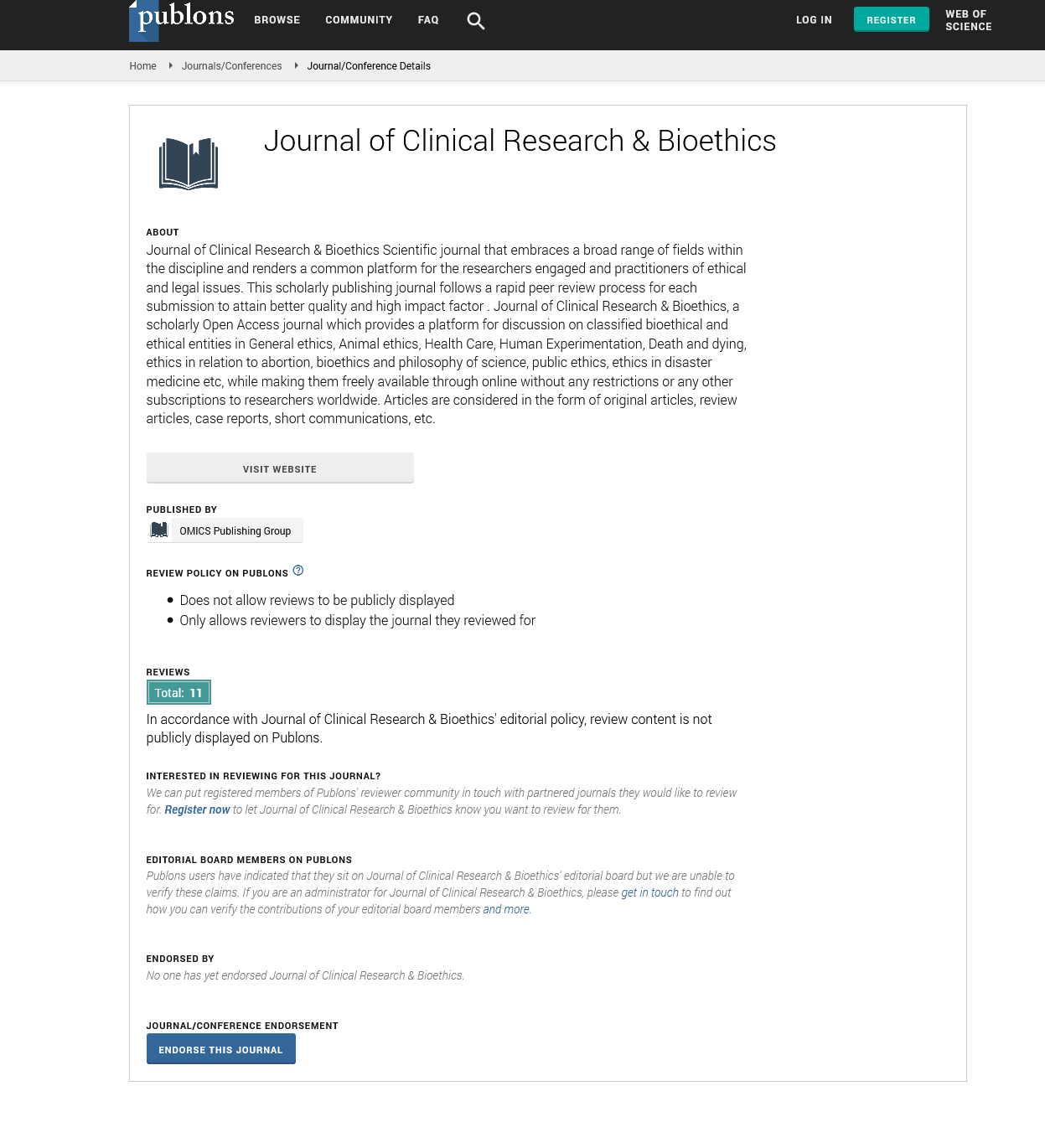Indexed In
- Open J Gate
- Genamics JournalSeek
- JournalTOCs
- RefSeek
- Hamdard University
- EBSCO A-Z
- OCLC- WorldCat
- Publons
- Geneva Foundation for Medical Education and Research
- Google Scholar
Useful Links
Share This Page
Journal Flyer

Open Access Journals
- Agri and Aquaculture
- Biochemistry
- Bioinformatics & Systems Biology
- Business & Management
- Chemistry
- Clinical Sciences
- Engineering
- Food & Nutrition
- General Science
- Genetics & Molecular Biology
- Immunology & Microbiology
- Medical Sciences
- Neuroscience & Psychology
- Nursing & Health Care
- Pharmaceutical Sciences
Sepsis: Reducing occurrence, and optimizing clinical, pharmaceutical, staff expertise and cost-percase outcomes
3rd International Conference on Advanced Clinical Research and Clinical Trials
September 20-21, 2017 Dublin, Ireland
Steven H Shaha
Center for Public Policy & Administration and Institute for Integrated Outcomes, USA
Posters & Accepted Abstracts: J Clin Res Bioeth
Abstract:
Reduced Sepsis: Sepsis among the most severe challenges in healthcare globally with high mortality and cost consequences cost-wise alone, $36 billion annually, and $110,000 cost-per-case. Much Sepsis is â??acquiredâ? in hospital, so early identification of pre-Sepsis cases and initiation of prophylactic treatment are crucial to Sepsis averted. Traditional approaches have proven ineffective for this persistent problem. Earlier pre-Sepsis recognition and care were addressed through locally-developed Sepsis early warning systems (SEWs) adults and paediatric in every ward/unit. Implementation of the SEWs resulted in. â?¢ 62.5% fewer Sepsis cases â?¢ 95.1% less Time for early pre-sepsis identification and care initiation (from 571.2 to 28.7 minutes) â?¢ 13.2% lower length of stay in intensive care units â?¢ 73.3% decreased codes â?¢ 30.3% decreased sepsis-related cardiac arrests â?¢ $14.3 million (US$) cumulatively. Improved Sepsis Care: Much of sepsis cannot be averted due to admissions or unavoidable in-hospital comorbidities. Traditionally cases are assigned to ICU due to clinical expertise. Can sepsis care be channeled outside of ICUs yet achieve better clinical outcomes, caretaker expertise and cost-per-case? Guidelines were developed internally to classify sepsis patients by severity for triaging and assigning to non-ICU wards/units (medical/surgical (Med/Surg), sub-ICU) by severity, all guided and facilitated by seasoned expert. Caregivers underwent Sepsis Nurse Program. House-wide sepsis increased in volume and severity during the study. Regardless, results showed reduced ICU admissions/assignments with increase caseloads in Med/Surg and sub-ICU. Impacts â?¢ 50.7% lower mortality house-wide, significantly in each care area â?¢ 23.6% reduced ICU mortality â?¢ 48.1% reduced patient days â?¢ 74.96% reduced cost-per-case, equaling estimated $32 million additional annually â?¢ Zero clinical complications experienced

